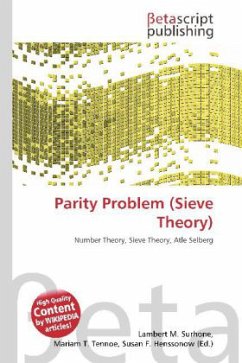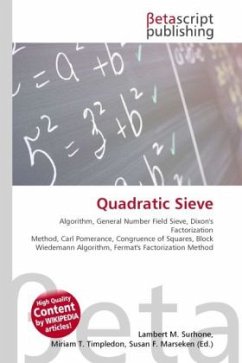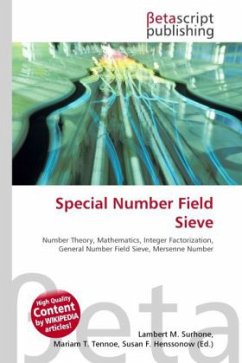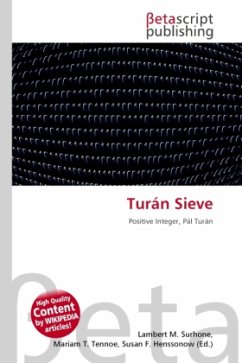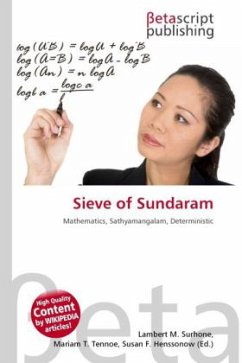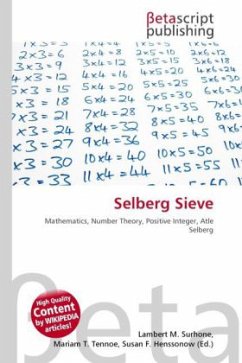
Sieve (Category Theory)
Versandkostenfrei!
Versandfertig in 6-10 Tagen
23,99 €
inkl. MwSt.

PAYBACK Punkte
12 °P sammeln!
High Quality Content by WIKIPEDIA articles! In category theory, a branch of mathematics, a sieve is a way of choosing arrows with a common codomain. It is a categorical analogue of a collection of open subsets of a fixed open set in topology. In a Grothendieck topology, certain sieves become categorical analogues of open covers in topology. Let C be a category, and let c be an object of C. A sieve S on c is a subfunctor of Hom( , c), i.e., for all objects c of C, S(c ) Hom(c , c), and for all arrows f:c c , S(f) is the restriction of Hom(f, c), the pullback by f, to S(c ). Put another way, a s...
High Quality Content by WIKIPEDIA articles! In category theory, a branch of mathematics, a sieve is a way of choosing arrows with a common codomain. It is a categorical analogue of a collection of open subsets of a fixed open set in topology. In a Grothendieck topology, certain sieves become categorical analogues of open covers in topology. Let C be a category, and let c be an object of C. A sieve S on c is a subfunctor of Hom( , c), i.e., for all objects c of C, S(c ) Hom(c , c), and for all arrows f:c c , S(f) is the restriction of Hom(f, c), the pullback by f, to S(c ). Put another way, a sieve is a collection S of arrows with a common codomain which satisfies the functoriality condition, "If g:c c is an arrow in S, and if f:c c is any other arrow in C, then the pullback gf of g by f is in S." Consequently sieves are similar to right ideals in ring theory or filters in order theory. The most common operation on a sieve is pullback. Pulling back a sieve S on c by an arrow f:c cgives a new sieve f S on c . This new sieve consists of all the arrows in S which factor through c .




